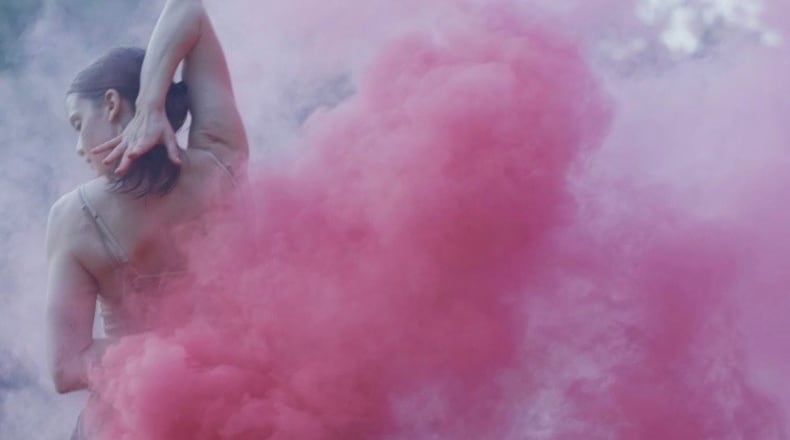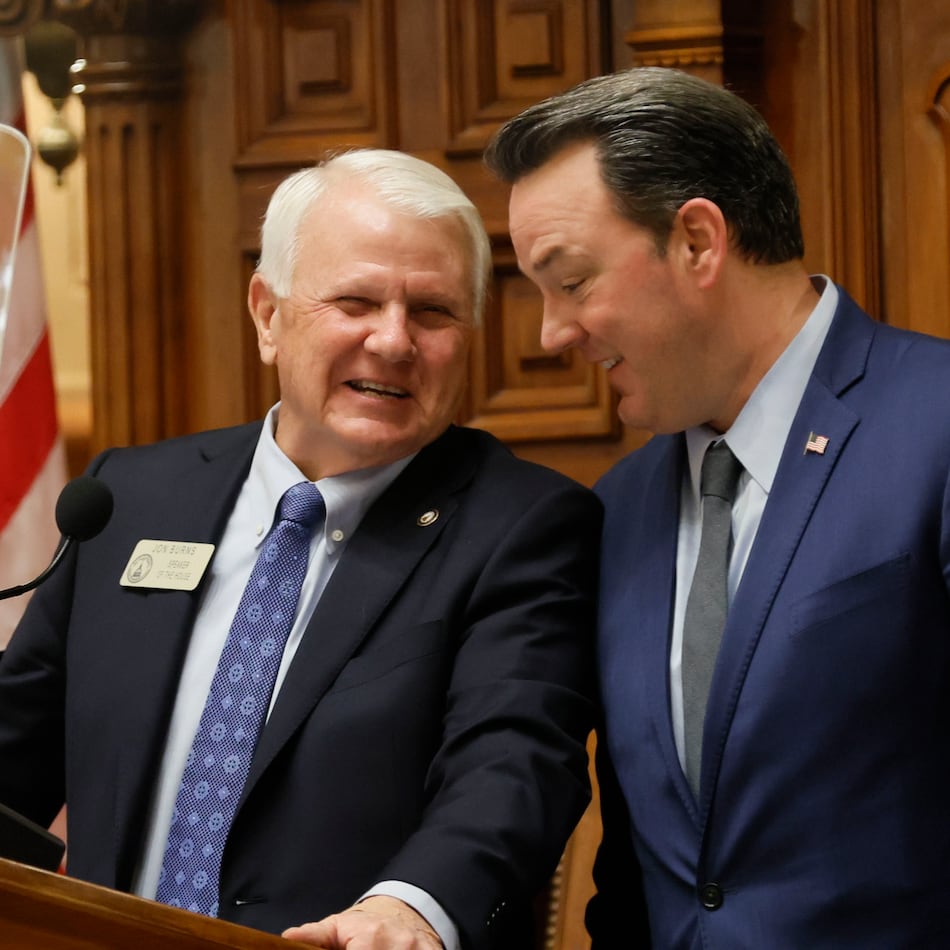This story was originally published by ArtsATL.
People dance to celebrate, worship, compete. When babies hear music, they move to it. Dance sells everything from Nike to Pepto Bismol, and now we have TikTok. But concert dance as an art form is a hard sell. Yet when new audiences get the opportunity to experience dance, they often fall in love.
Today, everyone watches content on screens, and the creative possibilities are endless because dancers and choreographers now have movie studios in their back pockets. Dancemakers who diversify, pivot and extend their collaborations to filmmaking could be the disruptive technology that drives audiences to all dance forms — including concert dance — in a meaningful way.
In Atlanta, dance filmmakers are expanding their reach to new audiences by embracing accessible technologies, skills and ways of manipulating movement with body and camera to convey ideas and storylines and to paint kinetic pictures.
Credit: Courtesy Sue Schroeder
Credit: Courtesy Sue Schroeder
These innovators are not only changing the city’s dance landscape but getting noticed nationally and internationally. Creators such as Core Dance Artistic Director Sue Schroeder and Kennesaw State University’s Dance Department faculty Lisa K. Lock and Autumn Eckman continue to rack up honors for their dance films. One of Eckman’s films was selected for the American Dance Festival’s Movies by Movers screen dance fest this year, along with a film by Schroeder and filmmaker Adam Larsen and another from Atlanta choreographer Danielle Swatzie.
Schroeder’s enCore: Dance on Film initiative encourages submissions from more than 25 countries. Each year, the selected entries are screened in a loop on the windows of Core Dance’s storefront space in Decatur.
The pandemic, when everyone went into isolation, created an especially rich opportunity for screen dance. Many resourceful choreographers collaborated with filmmakers to create work in new ways. Schroeder and Larsen, for instance, created ”Together,” a visual poem that has been selected for screenings and honors at several festivals.
Credit: Courtesy Sue Schroeder
Credit: Courtesy Sue Schroeder
”Home,” another Schroeder/Larsen collaboration, was an award winner and Official Selection at the Prague Underground Film Festival and Documentaries Without Borders International Film Festival and a semifinalist in more than 25 film festivals around the world.
Many dance films are shorts, but, during the pandemic, Tara Lee of Terminus Modern Ballet Theatre, with cinematographer Joseph Guay, created ”The Poet,” a full-length narrative work, while dancer-choreographer Darian Kane created a dance film, ”All Eyes Forward,” for the Artists Climate Collective Art to Action initiative.
Many other Atlanta dancers and dancemakers dipped their toes into cinematic waters, using everything from the iPhone, inexpensive video cameras and easy-to-access editing programs to professional film crews.
In 2022, for the first time in its 25-year history, Atlanta’s Dance Canvas added a dance film component to its annual choreographers’ showcase. It was a significant move by an organization dedicated to concert dance.
Even before the pandemic, choreographers and filmmakers were experimenting with dance film.
Credit: Courtesy Nadya Zeitlin
Credit: Courtesy Nadya Zeitlin
Choreographer Nadya Zeitlin captured Breen’s Alley in Decatur in her 2019 film “. . . and then the dishwasher got broken.” In the voiceover, Zeitlin battles domestic chores that are keeping her from her creative process. The camera angles, setting and props all contribute to a claustrophobic feeling.
The camera was pulled in tightly on Zeitlin, who was inside a shopping cart, conveying the feeling of being trapped more effectively than would be possible in a live performance.
In D. Patton White’s 2021 film “The Passenger,” the location is a character. Texture fills the frame, and White captures action approaching and retreating from the camera. Utilizing multiple takes in editing, he briefly creates a loop, elegantly entering left and exiting right.
The camera allows for focused attention and intimacy. Filmmaker Troy Bieser’s 2019 film ”Wounded Not Conquered” pulls the viewer into the delicate power of dancer Sally O’Grady. Held within intimate distance of body parts and face, the choreography is visible through blades of grass. With the introduction of stagecraft, the dancer exists inside a shroud of pink smoke, which draws the viewer’s attention to movement by curling around her leg.
Frankie Mulinix’ film “Construct: ATL” takes viewers on a tour of Atlanta with butoh movement. The choreography is superimposed onto various locations with multiple camera angles on the trio of dancers. Even an embodied camera circles the performers, creating a perspective difficult to achieve on stage.
Guiding the audience, the camera can be an extension of the body with extreme intimacy, as in Han Myers’ 2023 journey into the ear canal in “Amygdala.”
Dance film enables creative solutions to obstacles like changes in location and costuming. Emmy-winning director Lev Omelchenko portrays a young boy discovering a special energy in his 2017 film Sequoyah Blue Jays. Inside an Atlanta forest, he creates a fantasy landscape where the character is instantly transported using creative lighting, speed manipulation, fog and effects. Through body paint and feathers, he becomes a mythical bird. Layering footage, the two versions of the boy exist simultaneously.
Credit: Courtesy Lev Omelchenko
Credit: Courtesy Lev Omelchenko
Dancer Phae Monae, when heavily pregnant, dealt with her fear and hope about bringing a Black boy into the world in her 2020 collaboration with Omelchenko, “Free Noir Papillon.” They create a haven in which the audience can empathize with a woman at a life-changing moment.
The mother/daughter team of Celeste Miller and Ace McColl collaborate, highlighting Miller’s dance wisdom in “Accept the Poetics of Aging” and “Trouble Manifesto.”
Beacon Dance, directed by D. Patton White, celebrates dancers of all ages, formative thresholds and abilities. This was beautifully illustrated at the Chattahoochee River in Patton’s 2022 “choreopoem,” ”Adrift through the Interstices.”
In the world of dance film, the choreographic process extends into editing, opening up infinite opportunity into conceptual and visual concepts.
The techniques available in editing software are infinite and difficult to replicate live. A few frequently used in dance film are experimenting with timing and focus in an extreme way; bringing the outdoors in and the converse; and placing dancers in any environment. Subjects can be multiplied, footage repeated, retrograded and flipped, colors changed and images animated or layered.
Film can be worked on until the artist feels satisfied, free of the variables of live performance. When finished, it’s fixed, shareable and can be presented at any time and space, independently of those involved. Dance film is also not limited to the cinema; sometimes it is integrated back into live performance or created specifically for a live concert work such as Sean Nguyen-Hilton’s ”this room is a body.”
The re-imagining of Ernie Barnes’ painting ”The Maestro,” by Atlanta native Juel D. Lane, one of Dance Magazine’s “25 to Watch” in 2020, has been presented across the United States and won Best Music Video in the BronzeLens Film Festival. It was also selected for American Dance Festival’s Movies by Movers initiative in 2023.
This writer’s one-minute collaboration with Atlanta dancer and choreographer Sharon C. Carelock, “After The Reign: Confusion,” made its debut at Schroeder’s EnCore: Dance on Film in 2017 and has traveled nationally and internationally.
Perhaps now that dance film is getting more recognition nationally and internationally, it can help create a world where people seek out live dance performances in Atlanta as eagerly as they attend music and theater events.
::
Jennifer Scully-Thurston is a dance filmmaker, curator, video installation artist and manager of studio programs and community engagement at the American Dance Festival. In October 2019, she rolled out FilmFest by Rogue Dancer, a monthly online film festival devoted exclusively to dance.
Credit: ArtsATL
Credit: ArtsATL
MEET OUR PARTNER
ArtsATL (www.artsatl.org), is a nonprofit organization that plays a critical role in educating and informing audiences about metro Atlanta’s arts and culture. Founded in 2009, ArtsATL’s goal is to help build a sustainable arts community contributing to the economic and cultural health of the city.If you have any questions about this partnership or others, please contact Senior Manager of Partnerships Nicole Williams at nicole.williams@ajc.com.
About the Author
Keep Reading
The Latest
Featured







